Respiratory surfaces in mammals
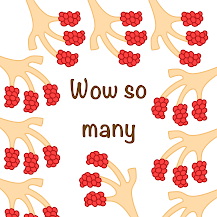
Large network of alveoli in lung tissue
Respiratory surfaces in insects
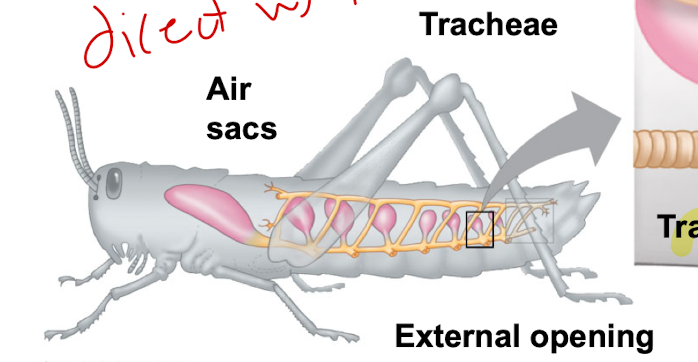
Extensive tracheal system
Tracheal Systems in Insects consist of...
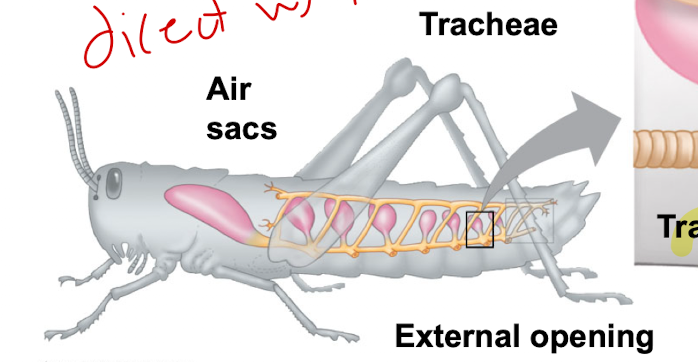
Tiny branching tubes that penetrate the body
Respiratory system order in mammals

1. Nasal cavity and pharynx
2. Trachea
3. Bronchi
4. Bronchioles
5. Alveoli (site of gas exchange)
Tidal Volume
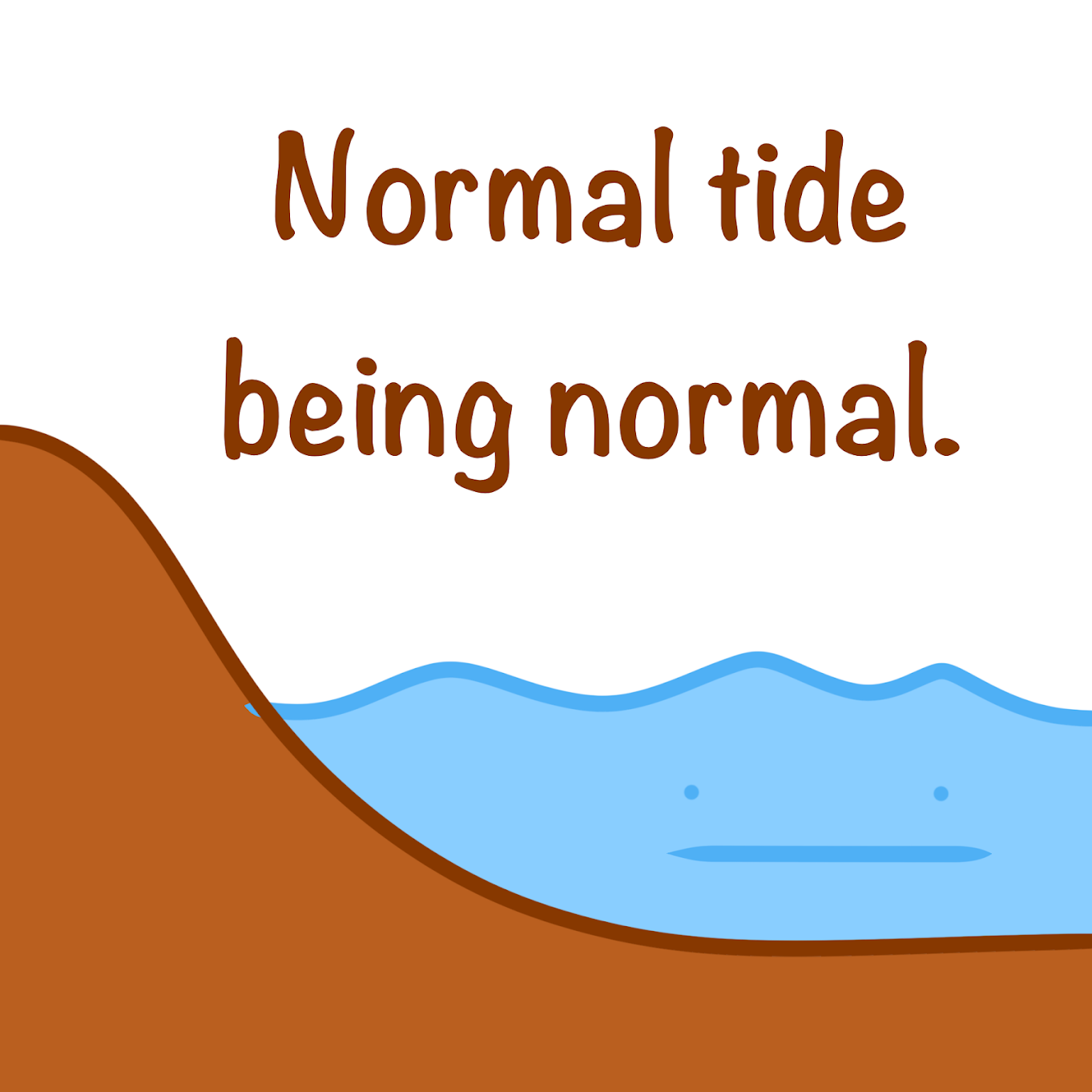
The volume of the air inhaled and exhaled during a normal breath
Vital Capacity
The maximum volume of air that can be inhaled and exchaled
Residual Volume
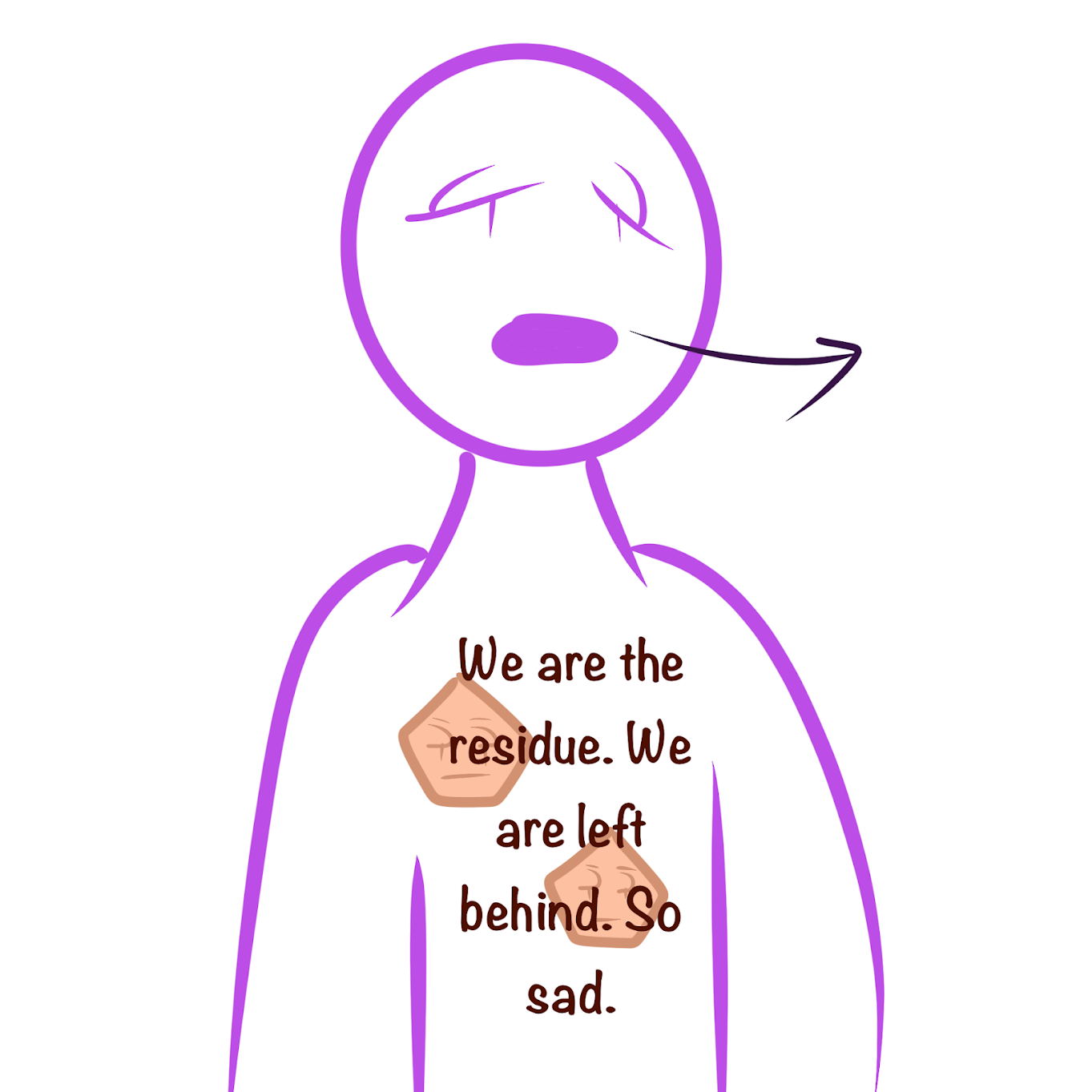
air remaining after full exhalation (incomplete removal)
Negative Pressure Breathing
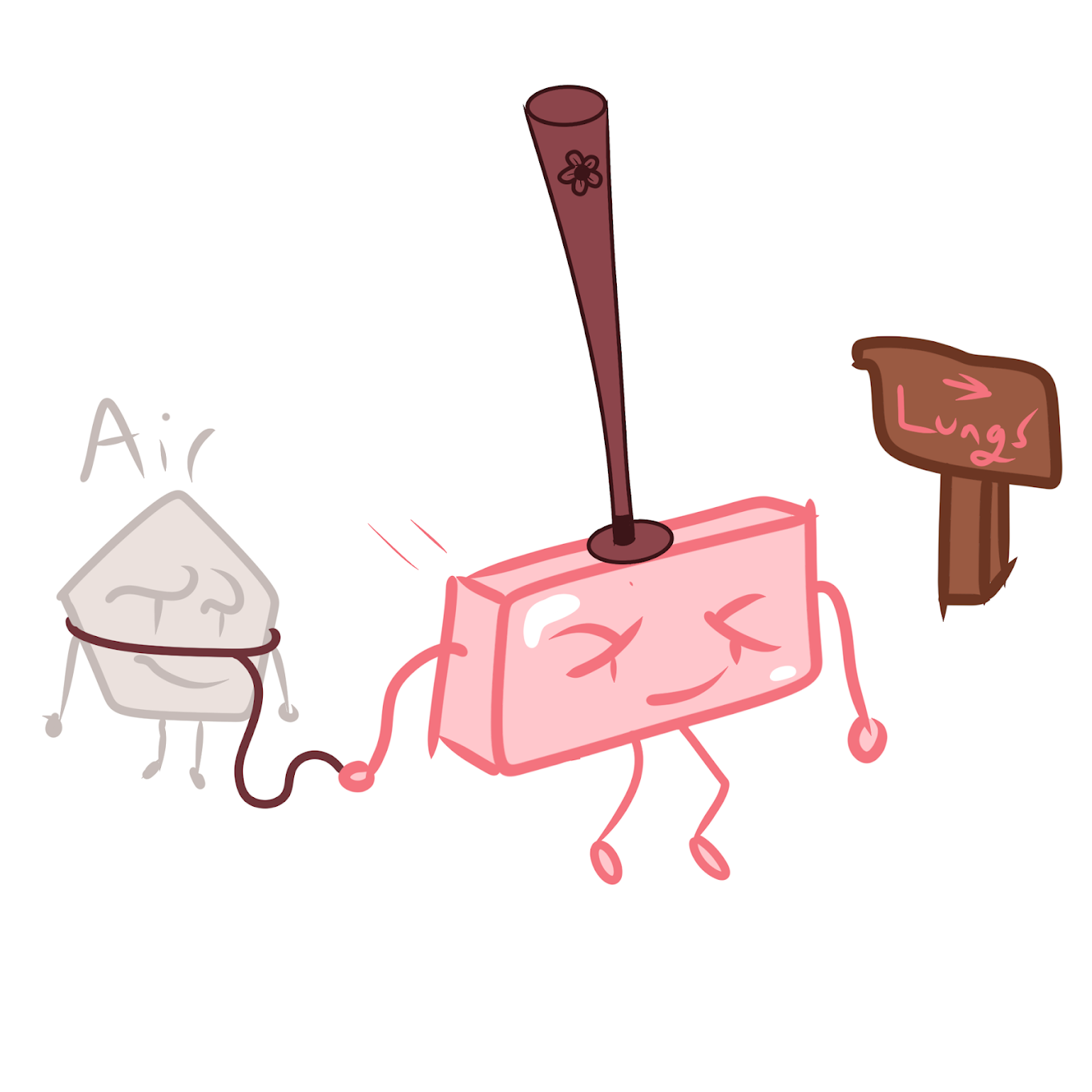
Pulls air into the lungs
Positive Pressure Breathing
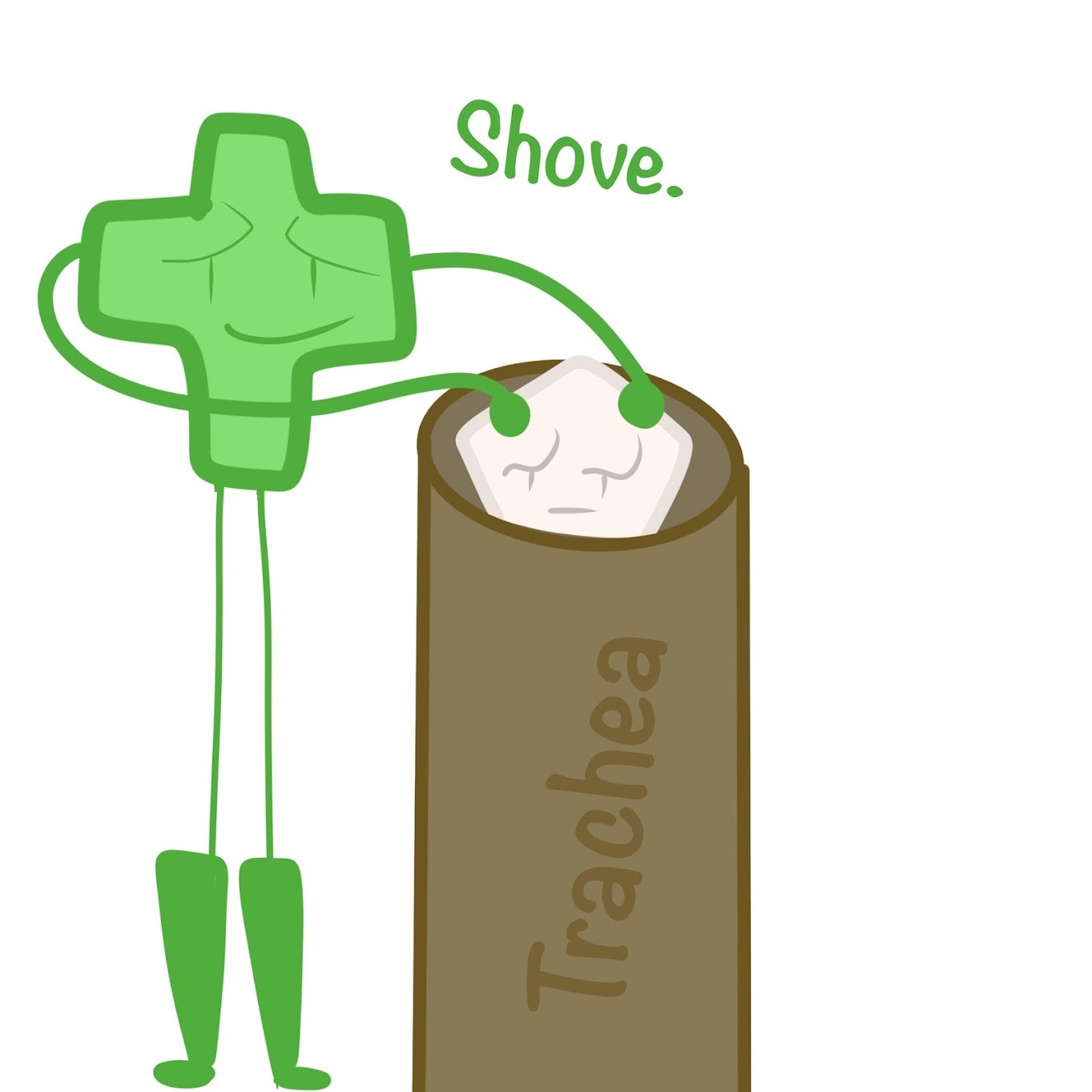
Forces air down the trachea
Who performs negative pressure breathing?
Mammals, birds, reptiles
MY BLOODY RALENTINE
Who performs positive pressure breathing?
Amphibians, fish
Is breathing associated with a negative or positive feedback loop?
Negative feedback loop
What happens if breathing is ineffective?
PCO2 increases --> pH of blood and cerebrospinal fluid decreases --> ventilation increases by blowing off CO2
What controls O2/CO2/breathing concentration in humans?
Chemosensors in the aorta and carotid arteries (which signals the breathing control centers)
How many air sacs does a bird have?
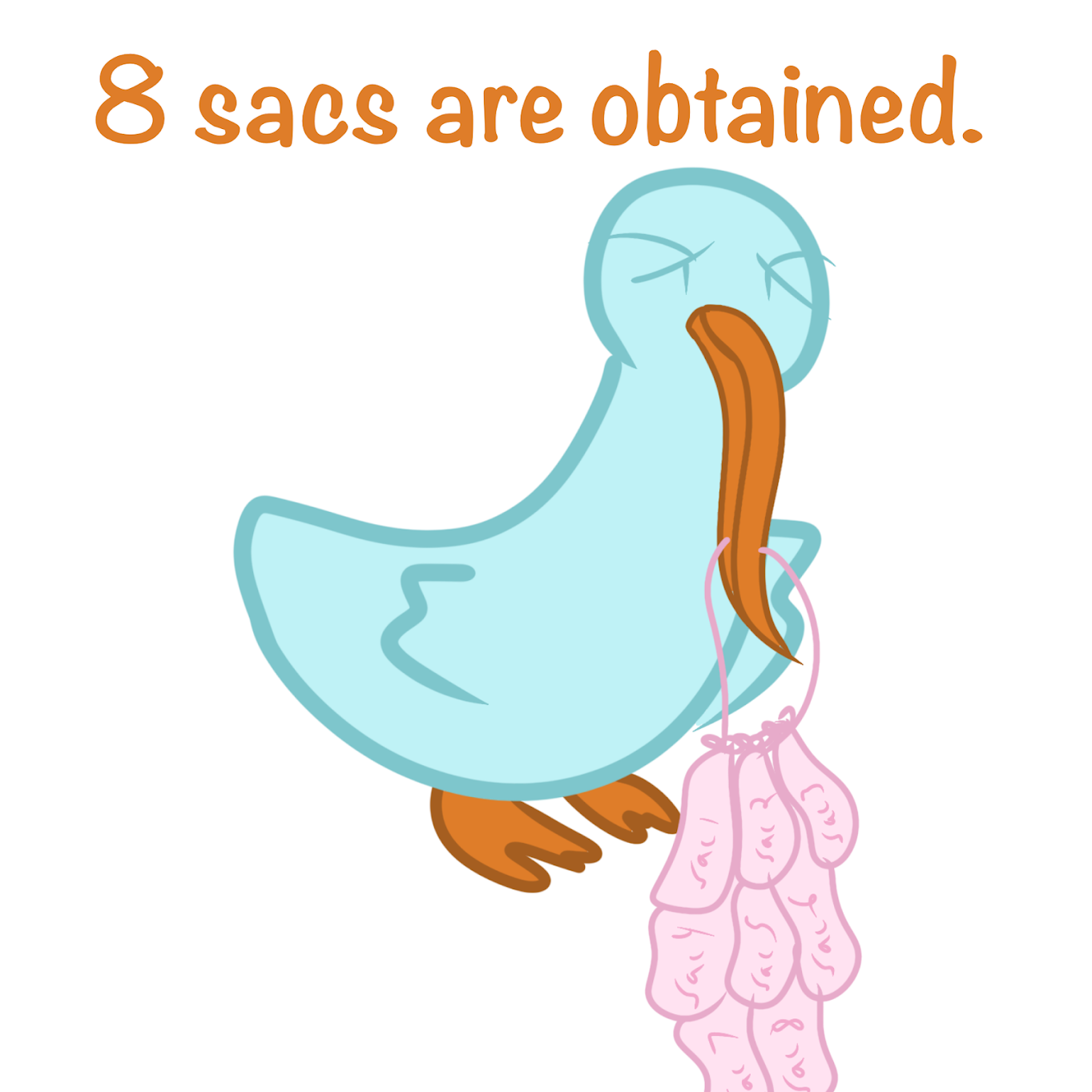
8-9
How do the air sacs help a bird breathe?
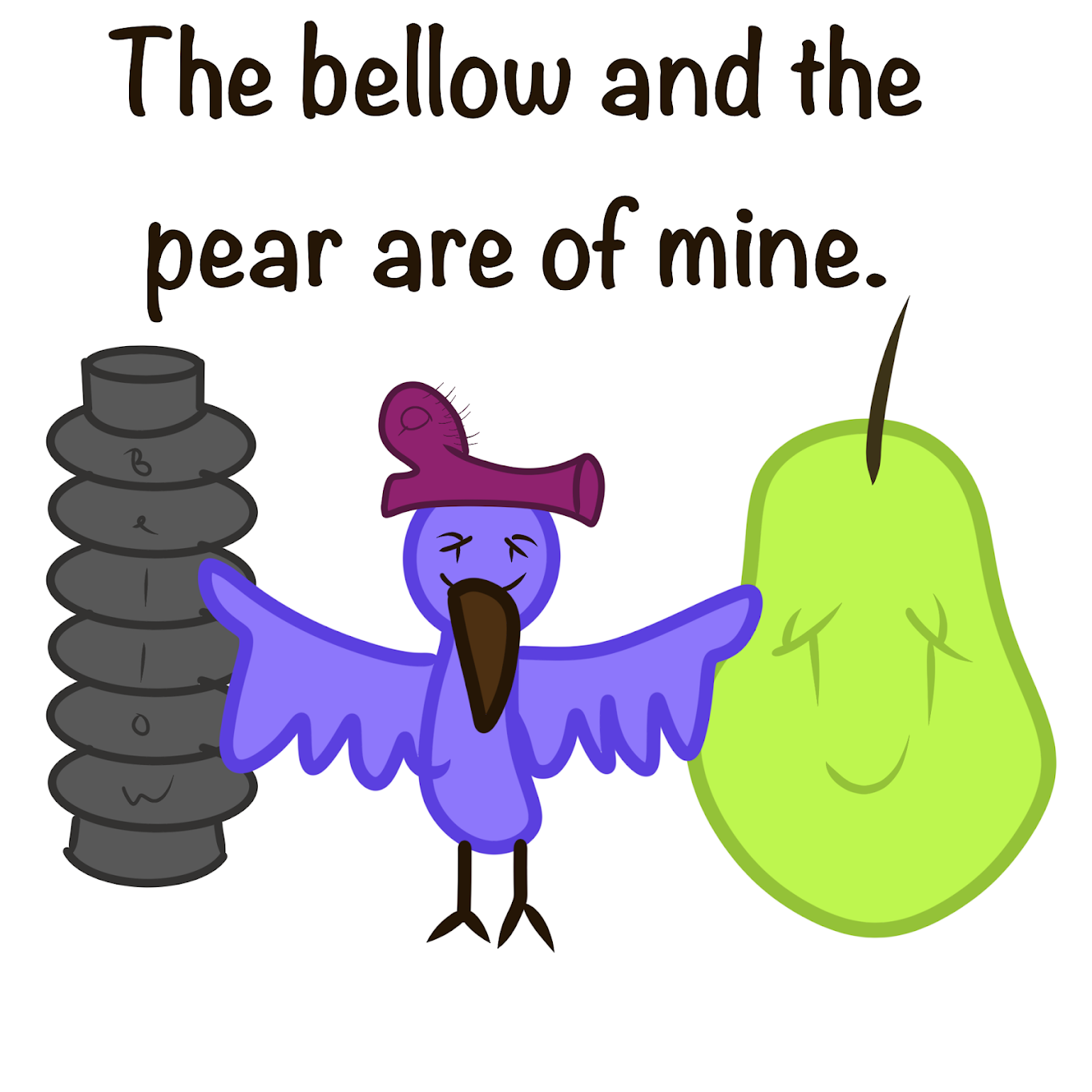
By functioning as bellows that keep the air flowing through the lungs; have parabronchi (air tubes) instead of bronchi
-Air passes in one direction only
-Fresh air does not mix
Partial Pressure in the alveoli
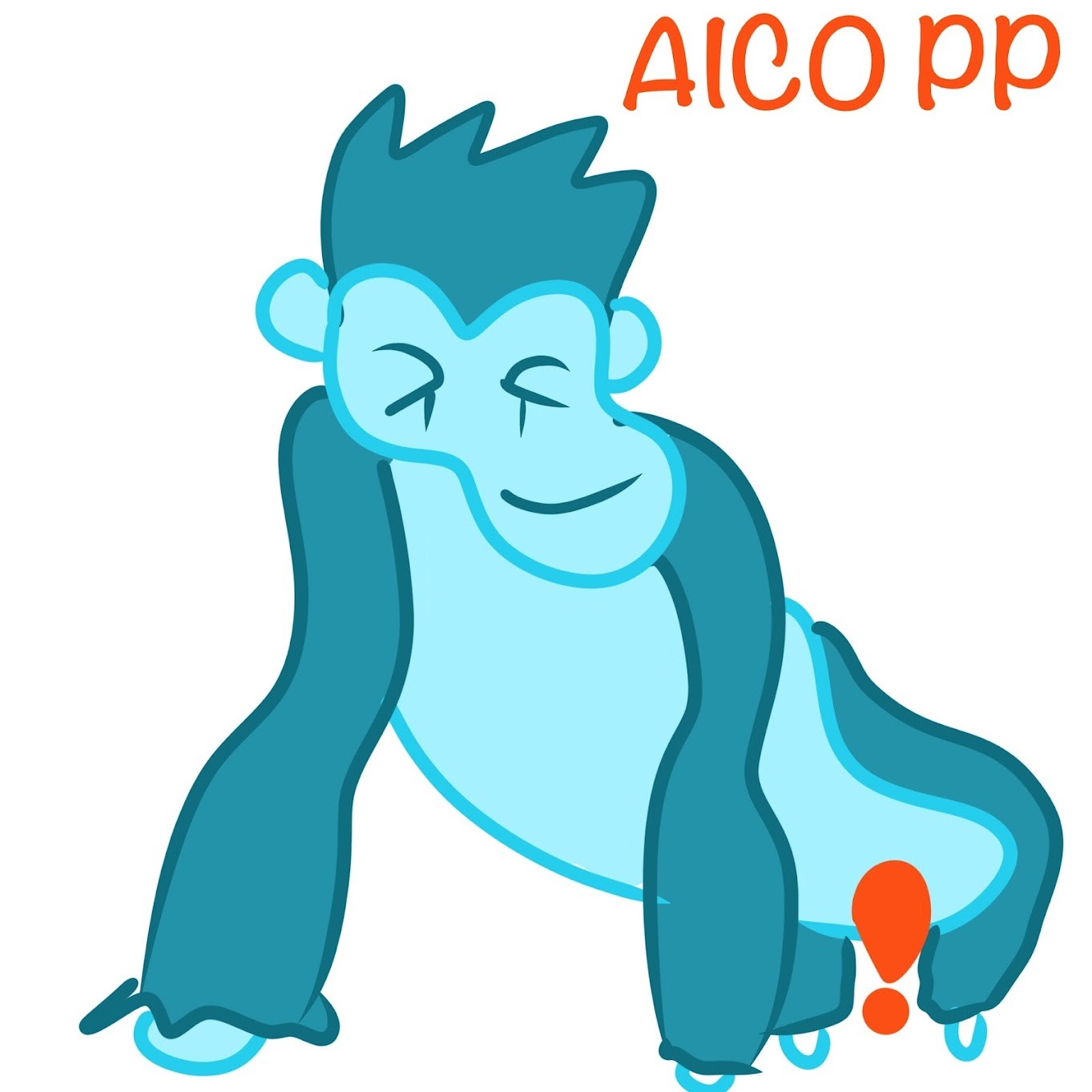
Favors diffusion of O2 into the blood and CO2 into the air
AI
Partial Pressure in the capillaries
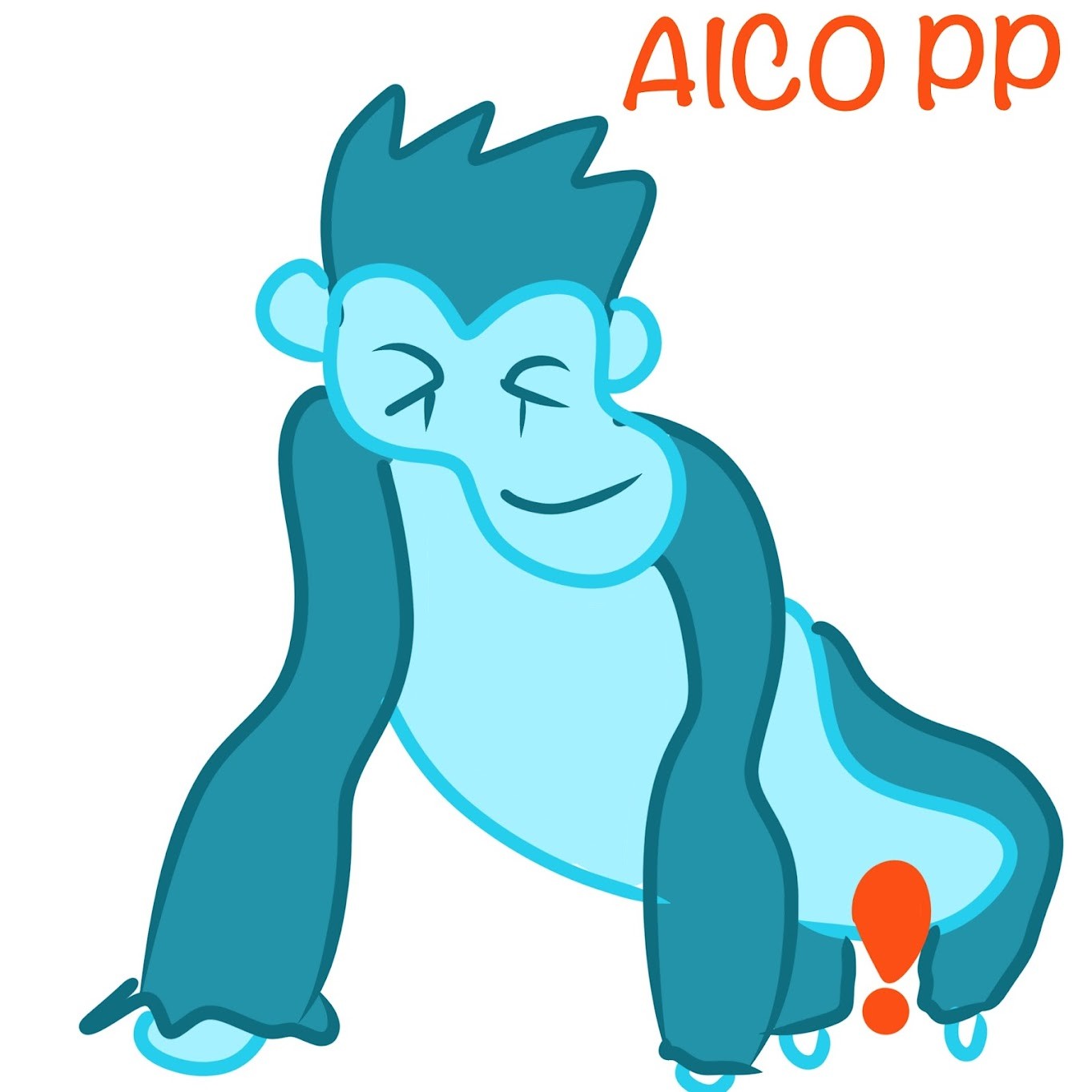
Favors diffusion of O2 out of the blood and CO2 into the blood
CO
How many subunits does a single hemoglobin molecule have?
4 (2 alpha and 2 beta)
How many molecules of O2 can each Hemoglobin (Hb) carry?
4
What facilitates the binding and offloading of O2 among the 4 subunits of Hb?
Allosteric cooperation
What causes the Bohr shift?
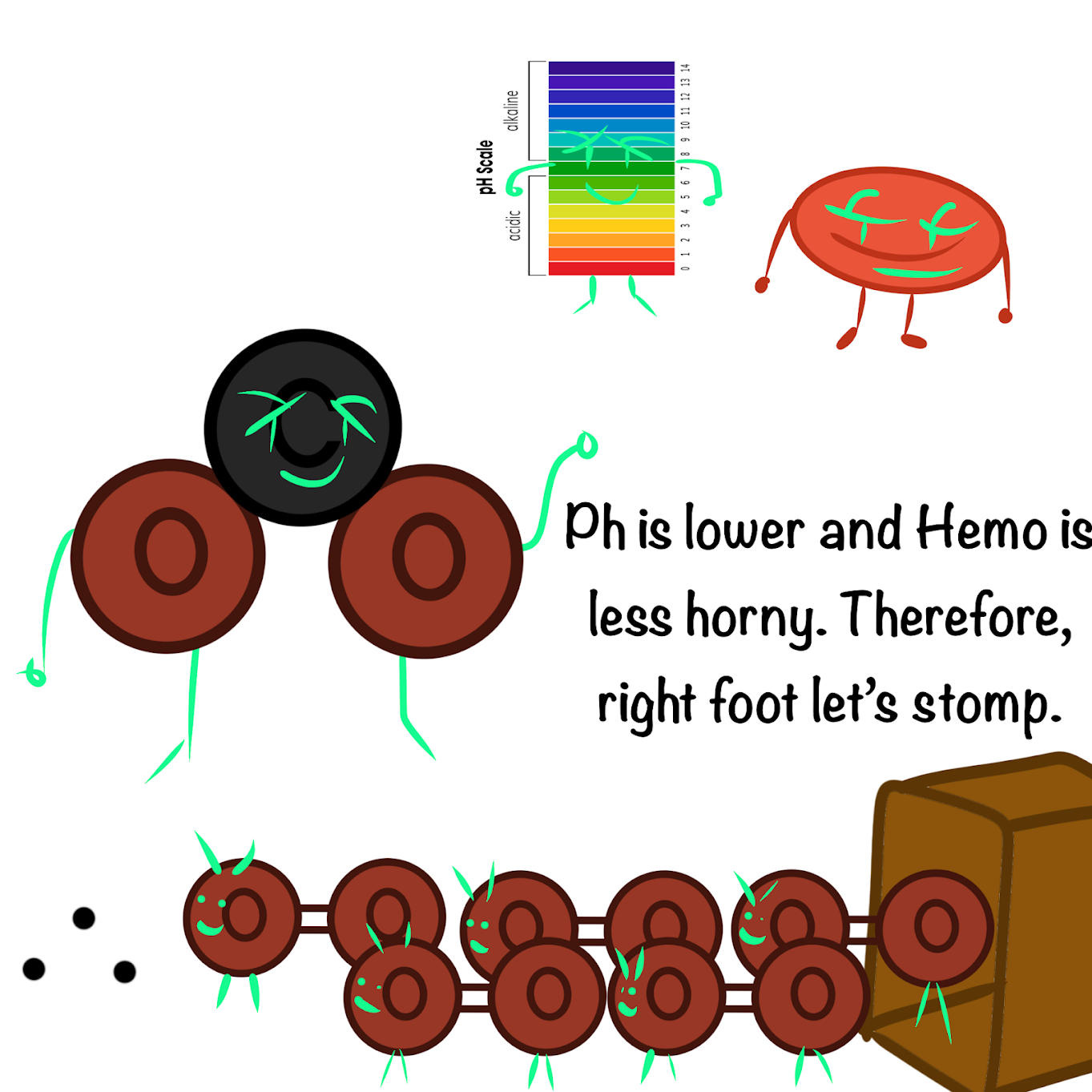
CO2 produced during cellular respiration lowers blood pH and decreases the affinity of hemoglobin for O2, causing a rightward shift and facilitating the offloading of oxygen
CO2 is transported into the lungs as
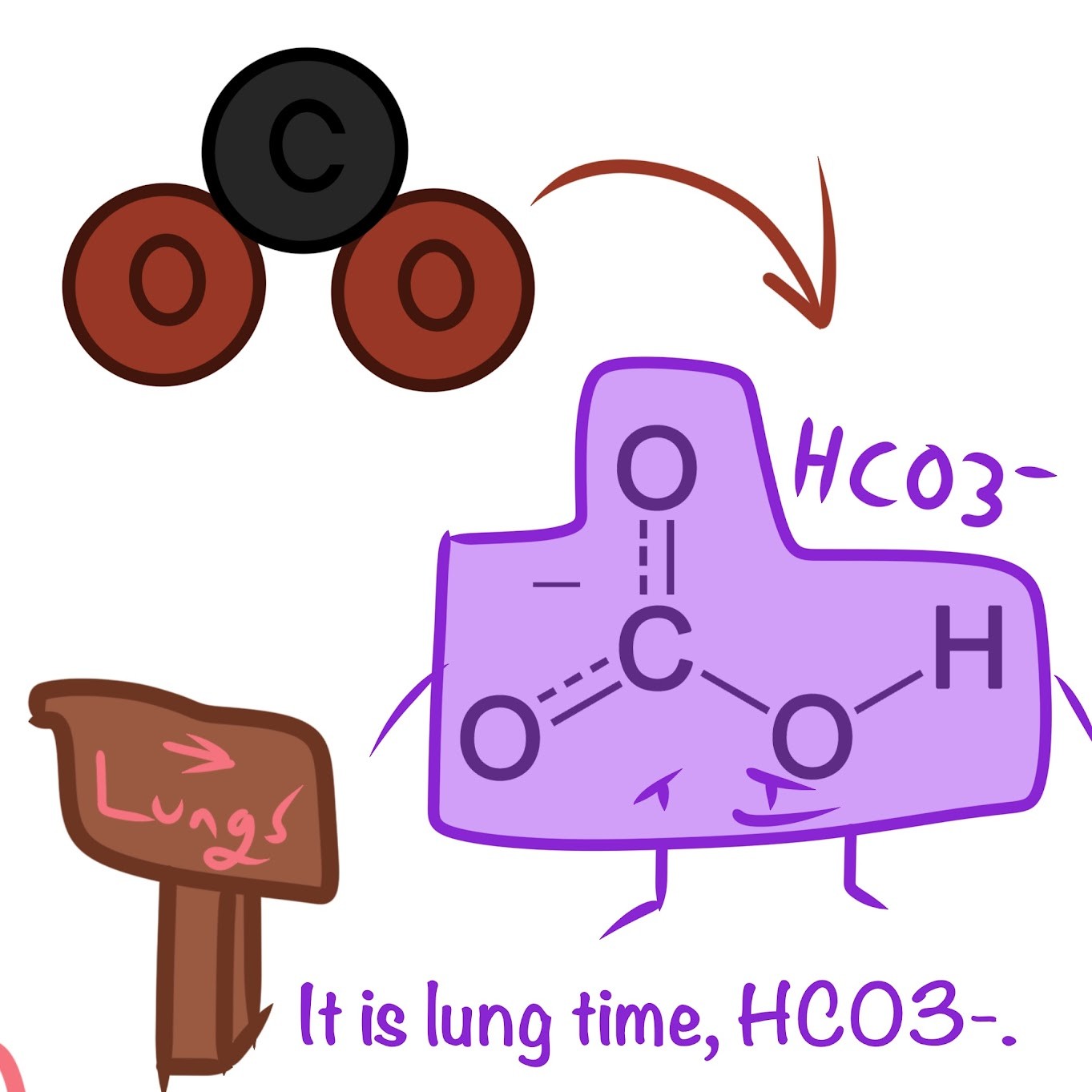
HCO3- ions in the plasma
Why is O2 more challenging in the water than the air to get?
There is less O2 available in water than in air
Why are gills extremely thin?
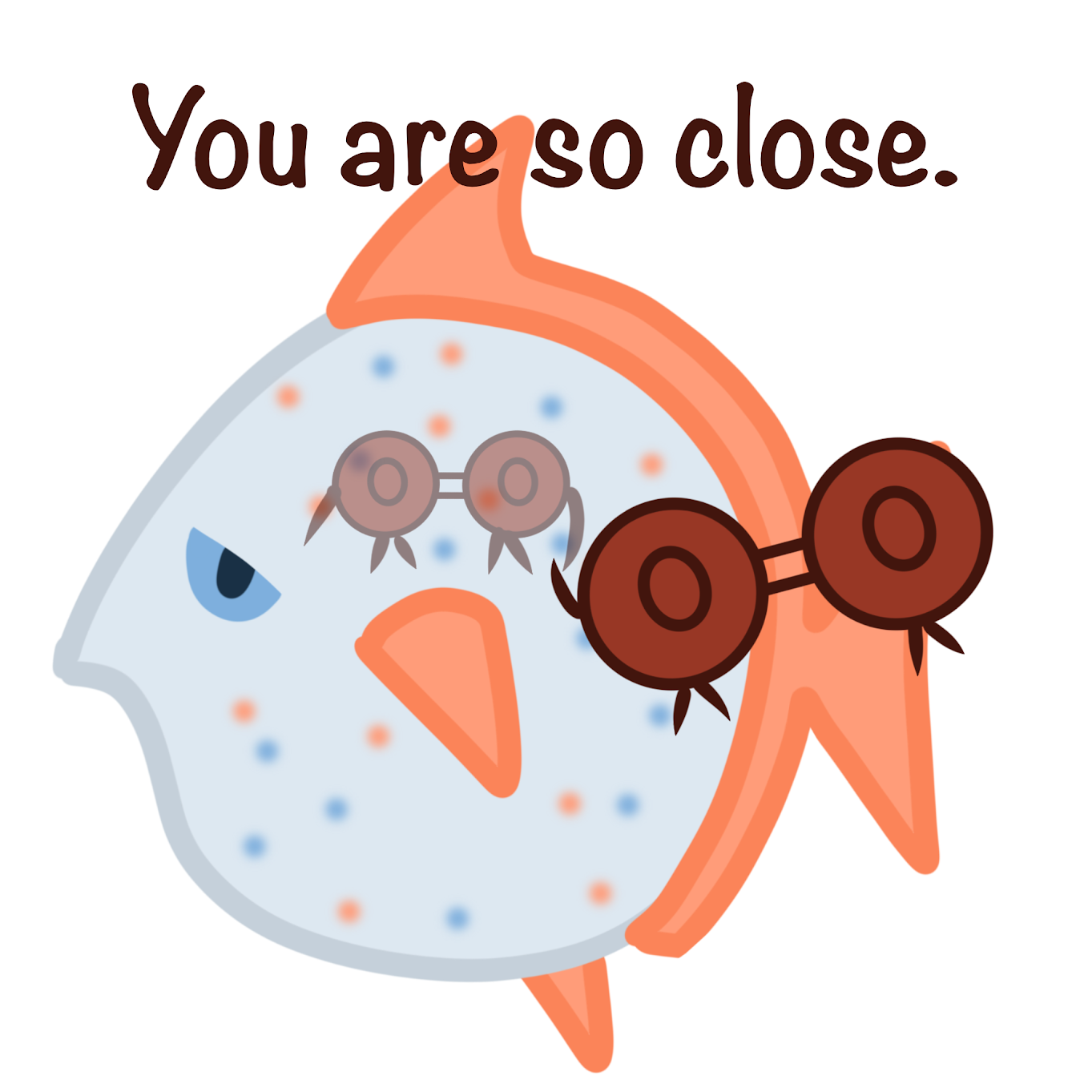
Offsets low O2 content in water by minimizing diffusive distance
_____, in which blood flows in the opposite direction to water, maintains high △p
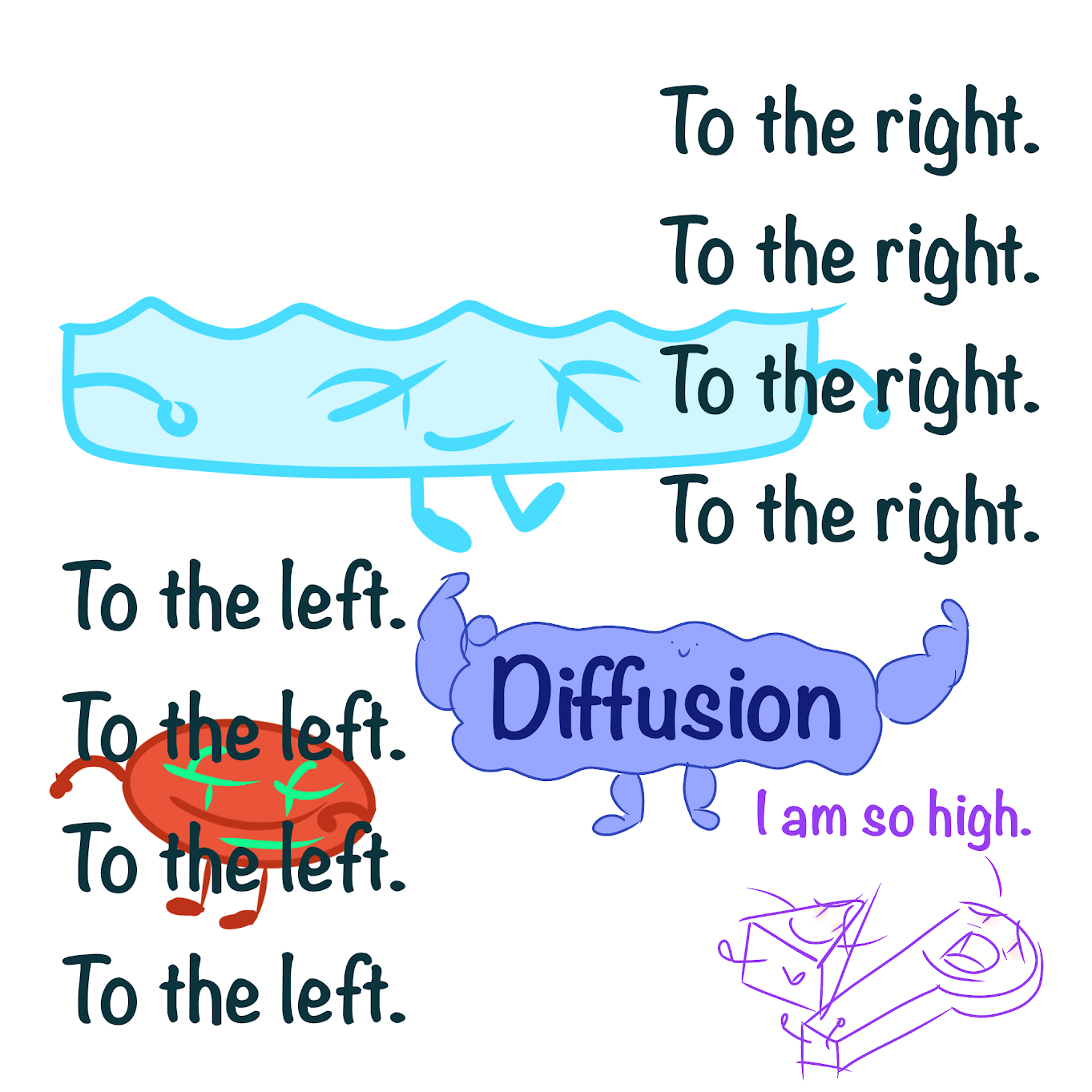
Countercurrent exchange
A skeletal muscle consists of a bundle of ____, each a single cell, running parallel to the length of the muscle
long fibers
Each muscle fiber itself is a bundle of smaller _____ arranged longitudinally
myofibrils
myofibrils are composed of 2 kinds of myofilaments:
Thick filaments and thin filaments
Thick filaments
Staggered arrays of myosin molecules
Thin filaments
Consist of 2 strands of actin and 2 strands of a regulatory protein
Functional unit of a muscle
Sarcomere
Actin filaments are anchored by
Z lines
Myosin filaments are anchored by
M lines
First step of the Sliding-Filament model of muscle contraction
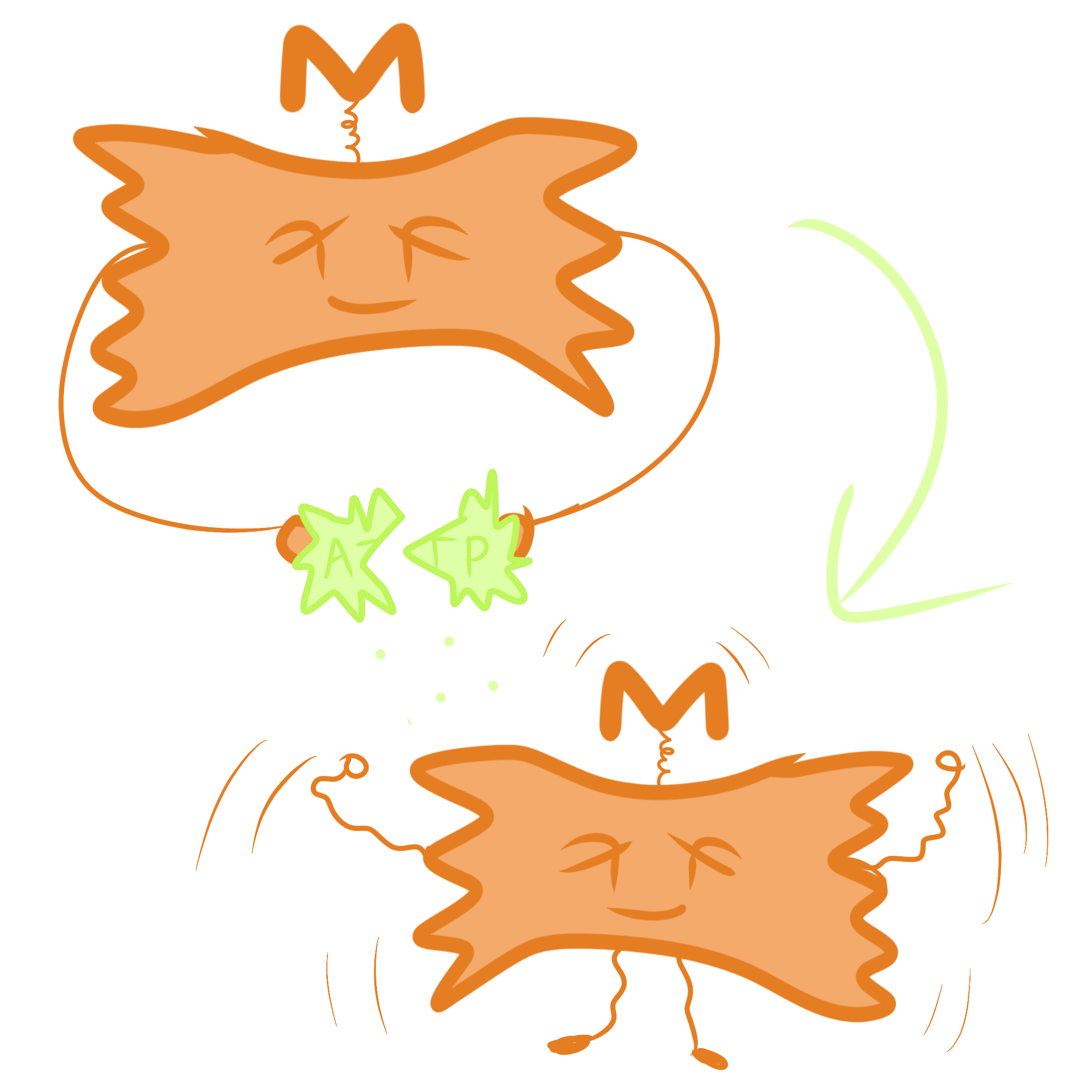
Myosin heads split ATP and become reoriented/energized
Second step of the Sliding-Filament model of muscle contraction
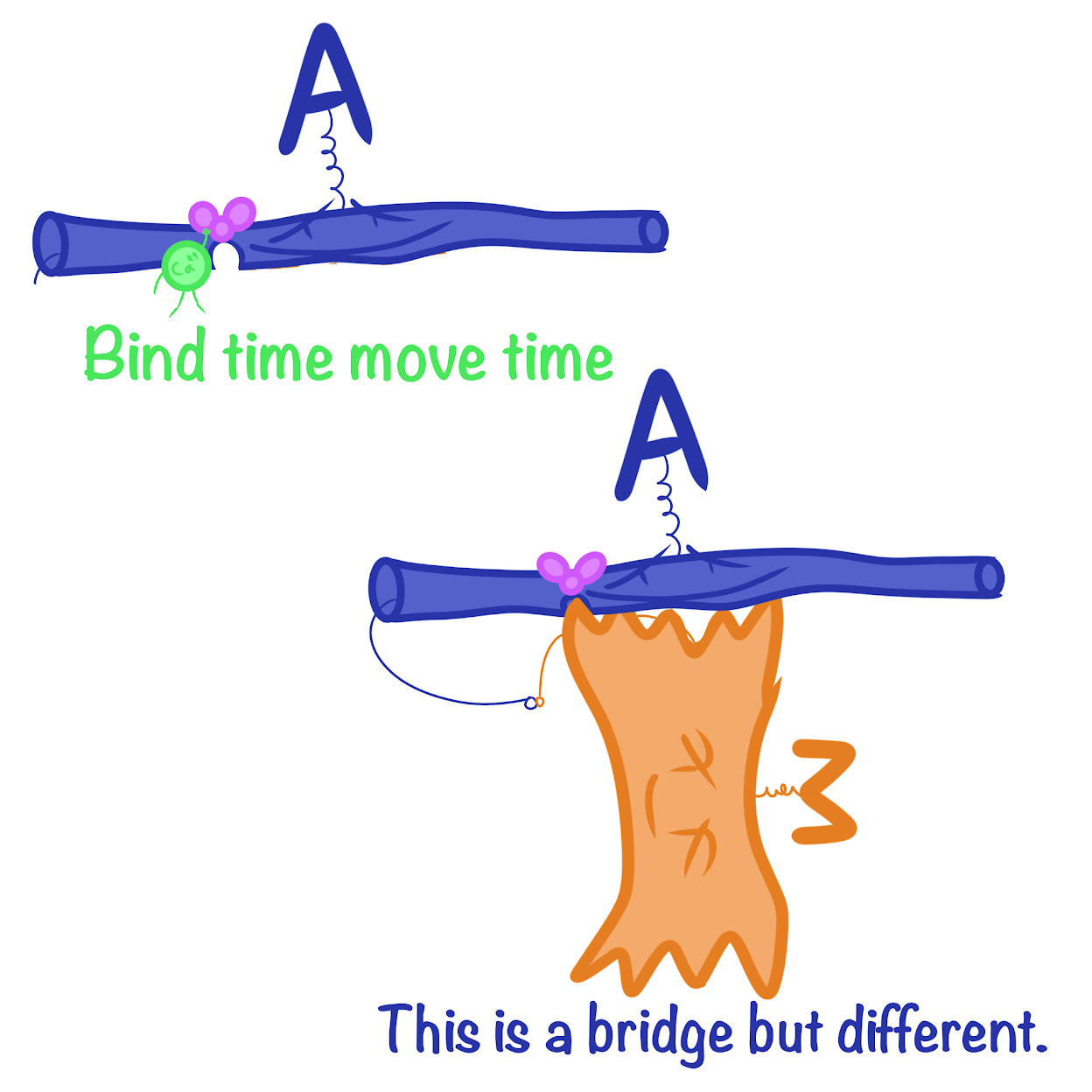
Ca2+ binds to troponin so that the binding site is uncovered; Head of the myosin molecule binds to an actin filament, forming a cross-bridge
Third step of the Sliding-Filament model of muscle contraction
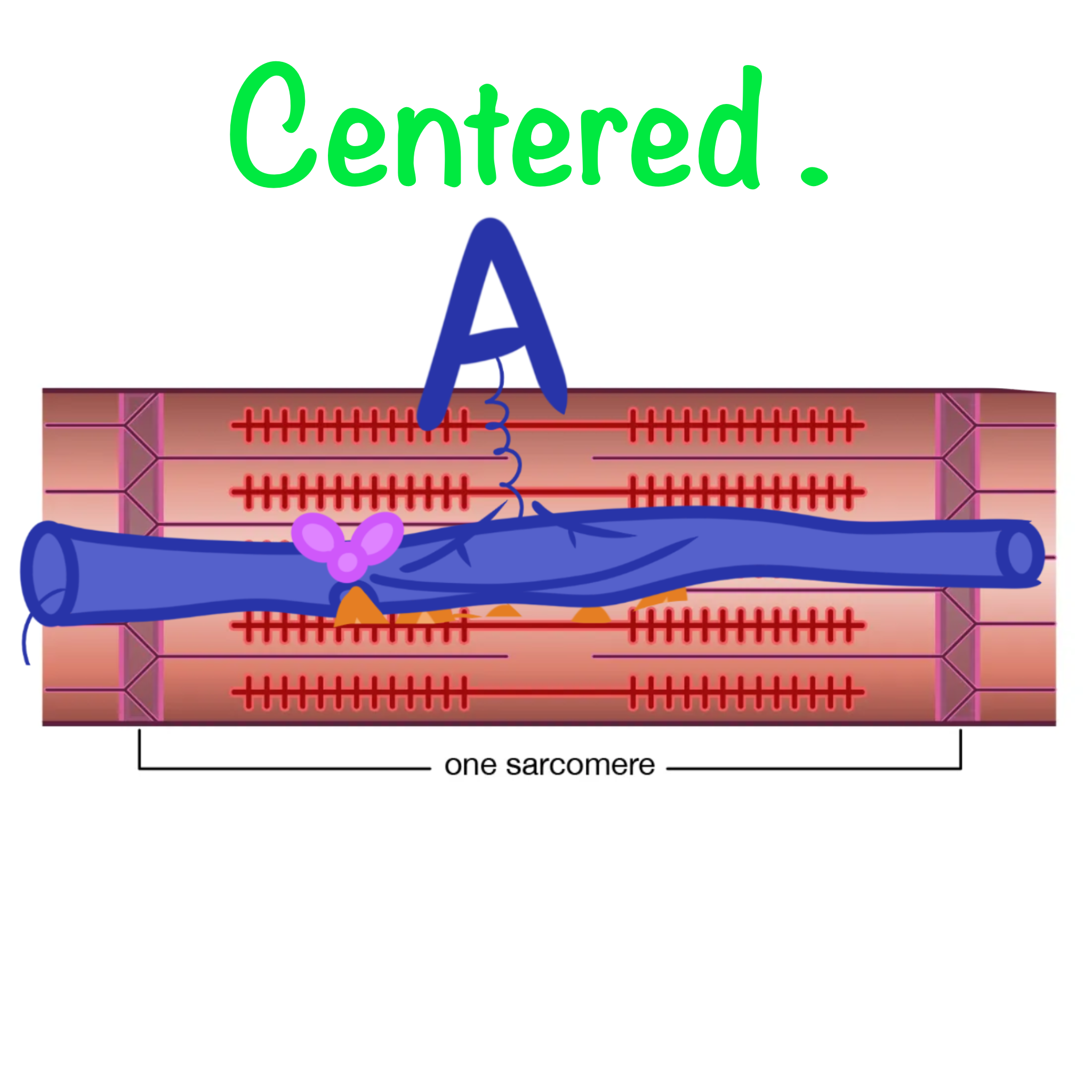
Myosin head rotates towards the center of the sacromere (Power stroke); thin filament moves toward the center of the sarcomere.
Tropomyosin/Troponin complex
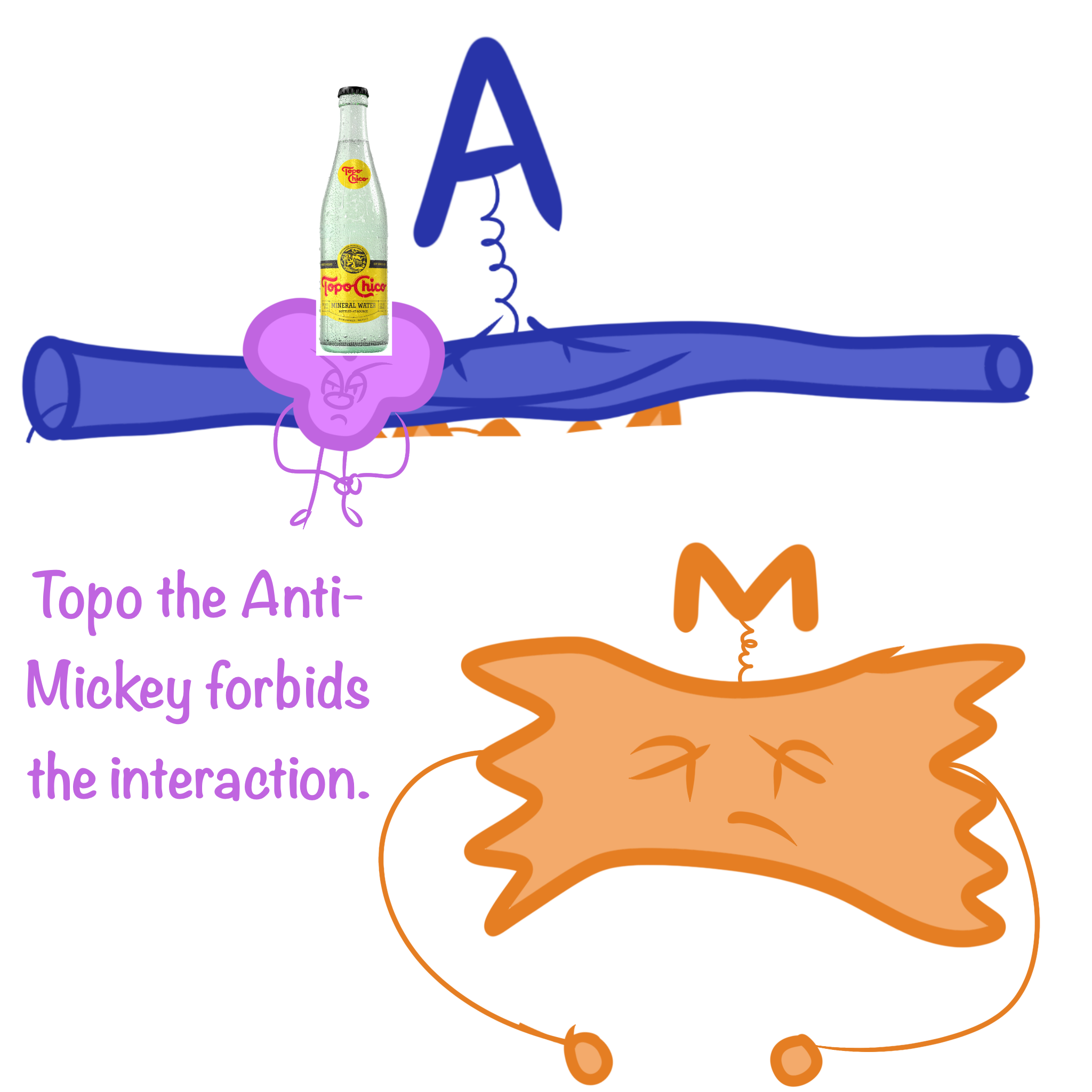
binds to actin strands on thin filaments, preventing actin and myosin from interacting
What concentration ions are involved in muscle contraction?
Calcium ions (Ca2+)
An action potential in a motor neuron that makes a synapse with the muscle fiber is the
stimulus leading to contraction of a muscle fiber
First step of muscle contraction
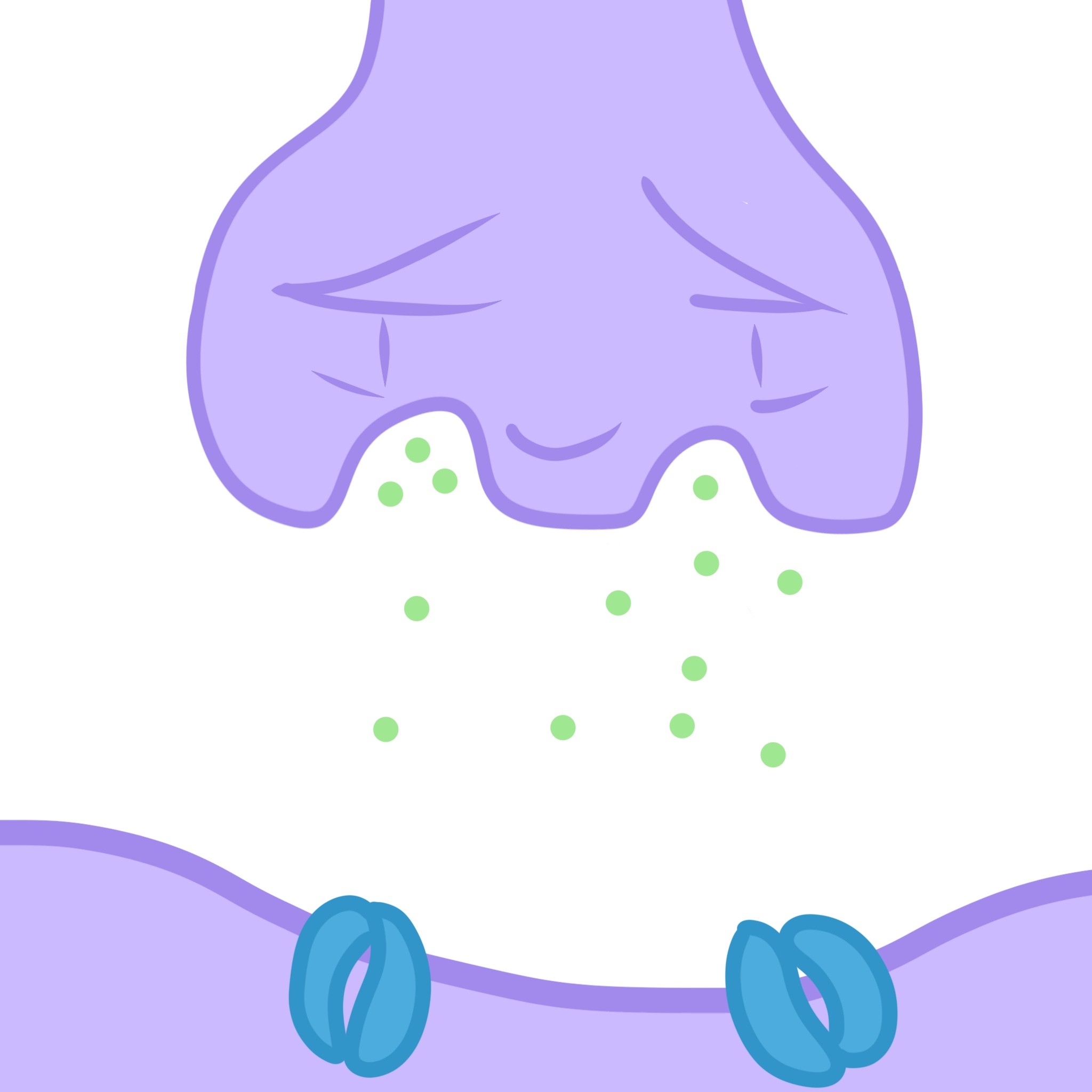
The synaptic terminal of the motor neuron releases the neurotransmitter acetylcholine (Ach)
Second step of muscle contraction

Acetylcholine depolarizes the muscle, causing it to produce an action potential, which travels to the interior of the muscle fiber along transverse (T) tubules
Third step of muscle contraction
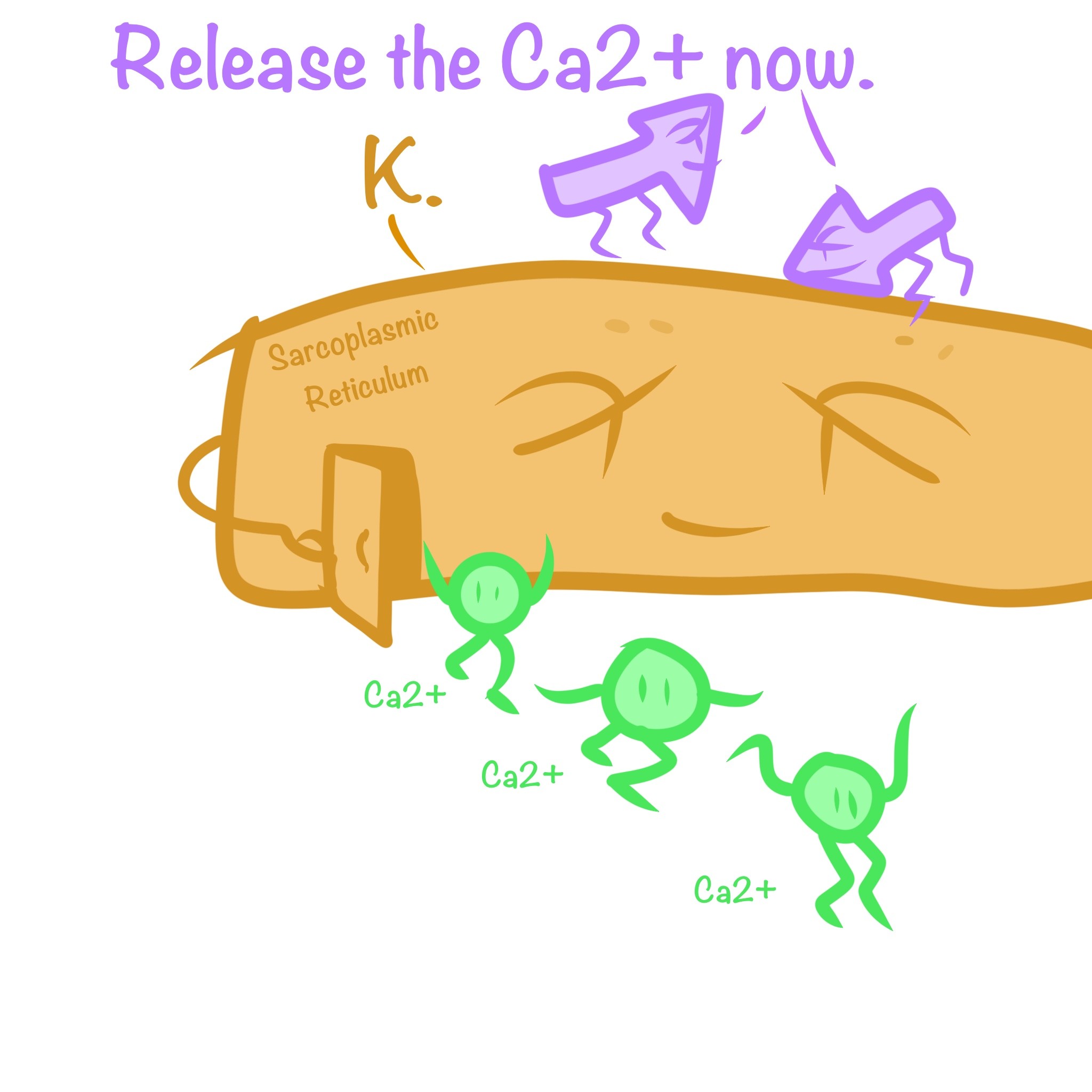
The action potential causes the sarcoplasmic reticulum (SR) to release Ca2+
Fourth step of muscle contraction
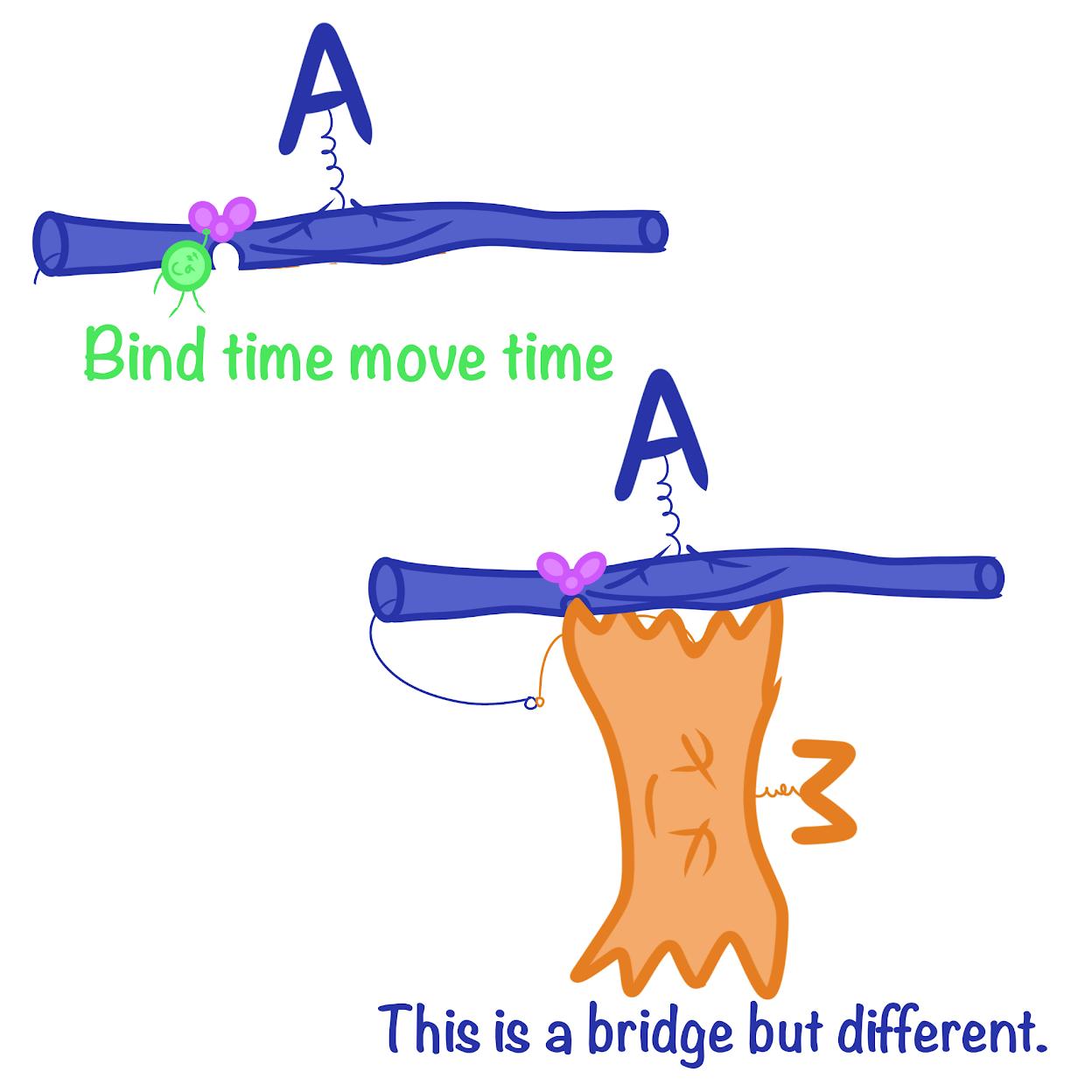
Ca2+ binds to the troponin complex on the thin filaments, exposing myosin-binding sites (allowing the cross-bridge cycle to proceed)
Fifth step of muscle contraction
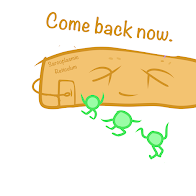
When motor neuron input stops, the muscle cell relaxes; Transport proteins in the SR pump Ca2+ out of the cytosol and regulatory proteins shift back to the myosin-binding sites
Sixth step of muscle contraction
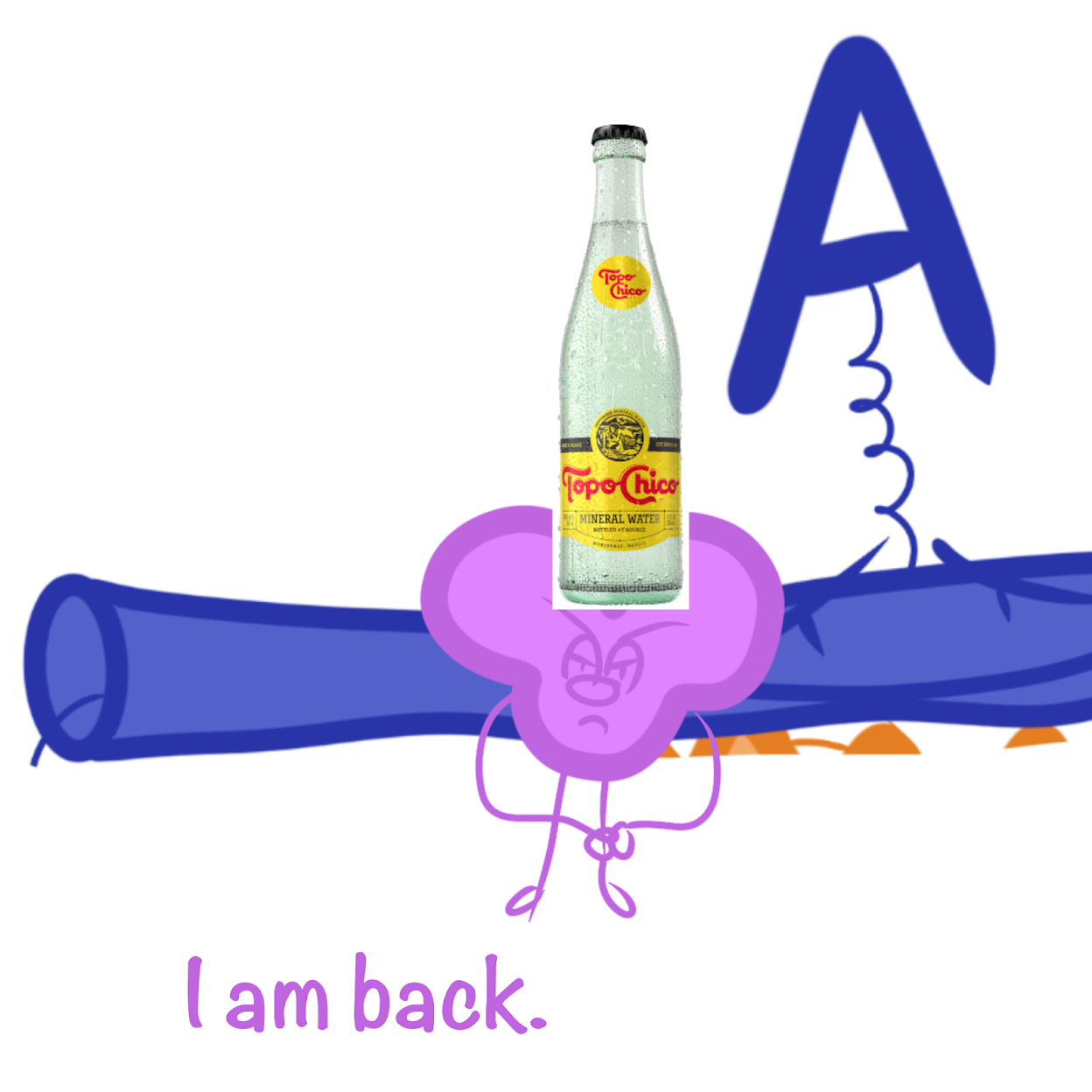
Conformational change in troponin
2 basic mechanisms by which the nervous system produced graded contractions
Varying the number and varying the rate
Tetanus
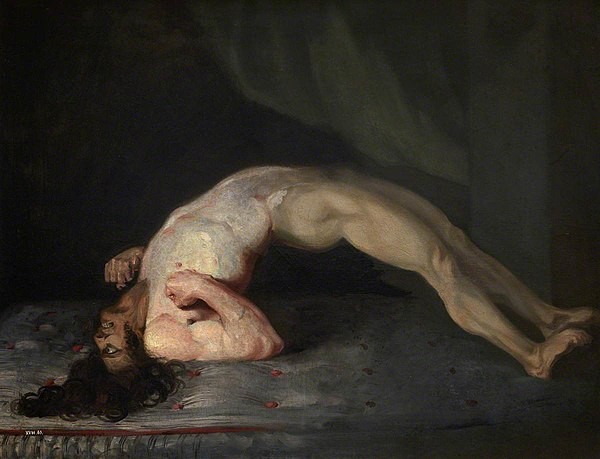
A state of smooth, sustained contraction when the rate is so high the muscle fiber cannot relax between stimuli
Oxidative Fibers
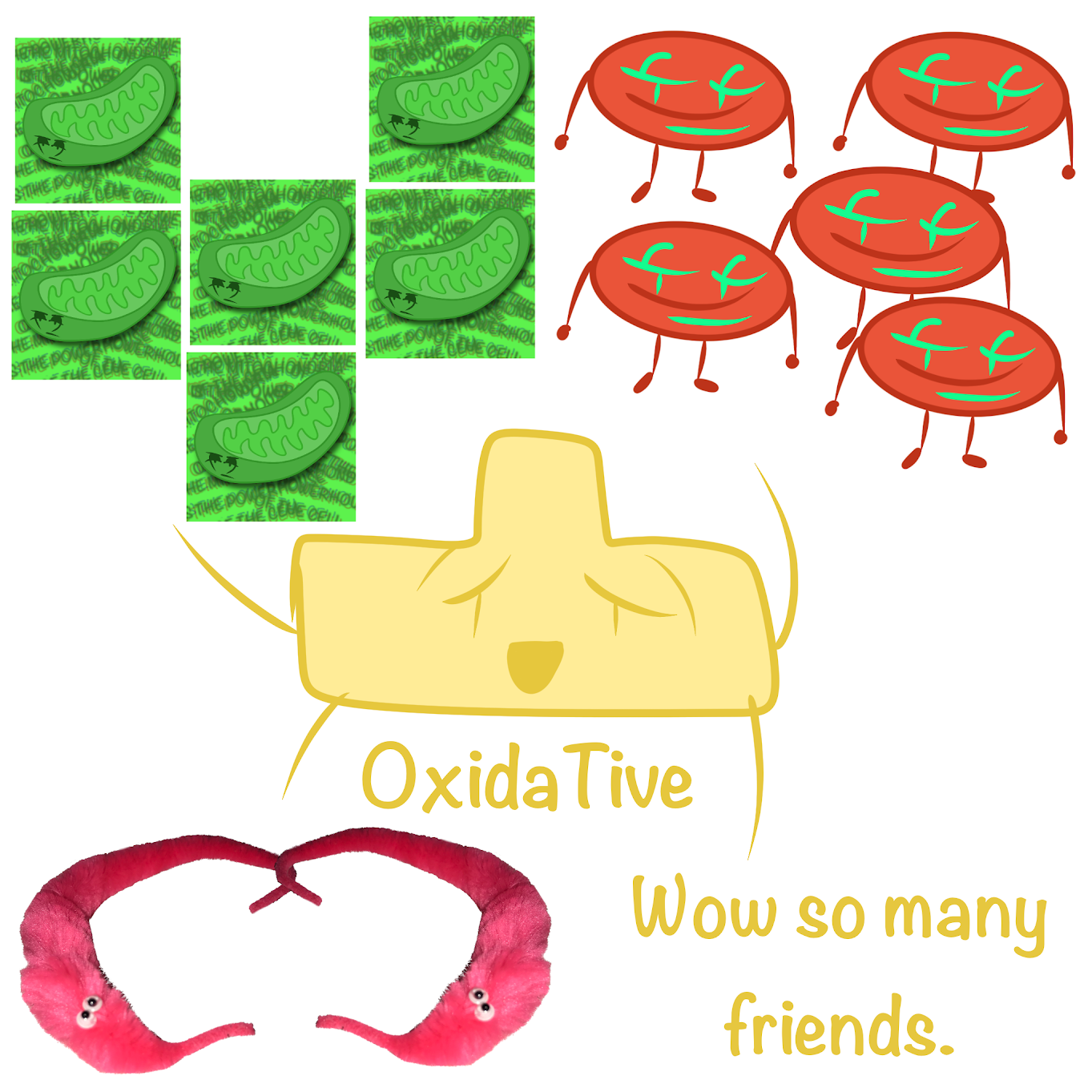
-Rely mostly on aerobic respiration to generate ATP
-Many mitochondria
-Rich blood supply
-Large amount of myoglobin
-Dark meat
Glycolytic Fibers
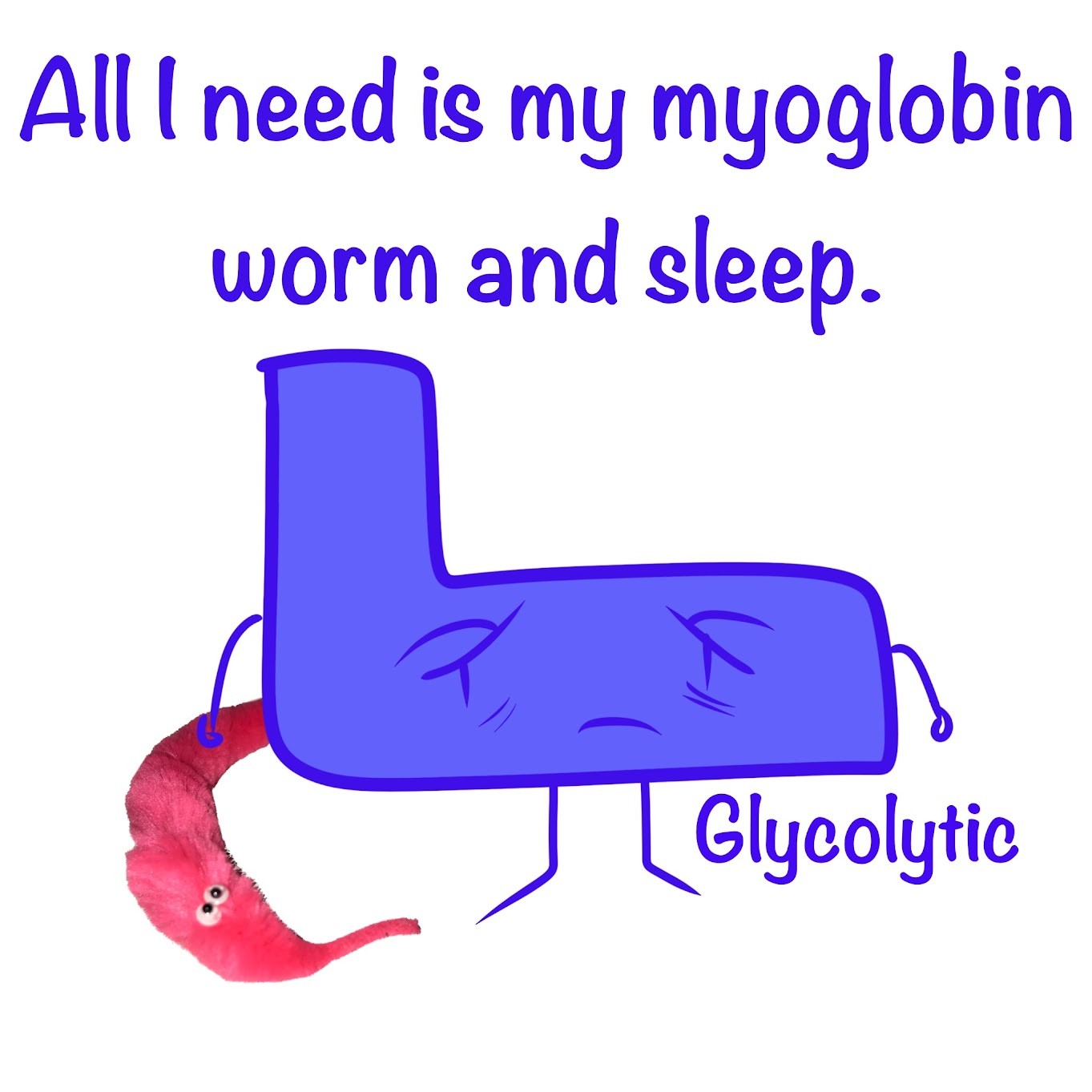
-Uses glycolysis (anaerobic) as their primary source of ATP
-Less myoglobin; tires more easily
-Light meat
Slow-twitch fibers
-Contracts slowly
-Sustains longer contractions
-ALL oxidative
Fast-twitch fibers
-Contracts rapidly
-Sustains shorter contractions
-Glycolytic or oxidative
Slow Oxidative Muscles
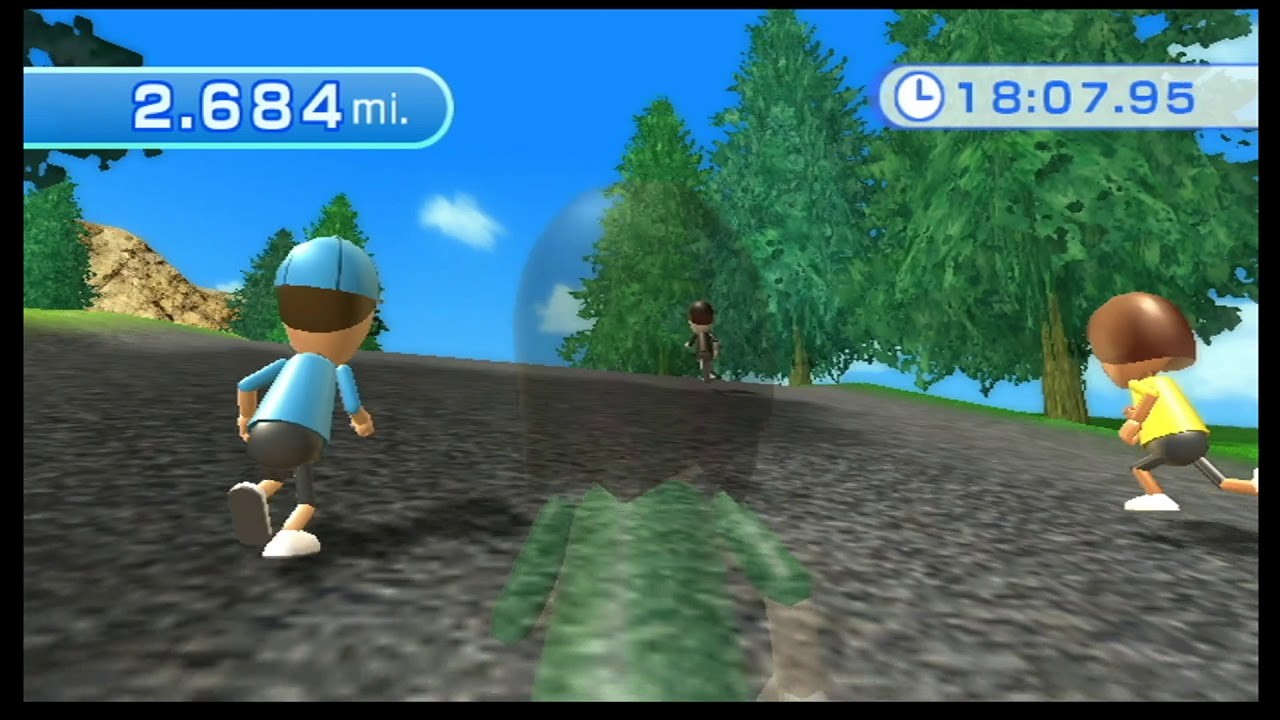
-Slow concentration speed
-Aerobic respiration
-Slow rate of fatigue
-Many mitochondria
-High myoglobin content
Fast Oxidative Muscles
-Fast concentration speed
-Aerobic respiration
-Intermediate rate of fatigue
-Many mitochondria
-High myoglobin content
Fast Glycolytic Muscles
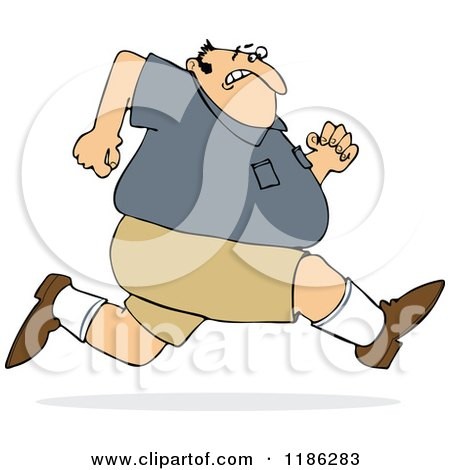
-Fast concentration speed
-Glycolysis
-Fast rate of fatigue
-Few mitochondria
-Low myoglobin content
Molarity
Concentration of a dissolved substance
Osmolarity
Concentration of all solutes that contribute to the osmotic pressure of a solution (depends on the number of dissolved particles); determines the movement of water across a selectively permeable membrane
Isosmotic
Same concentration of solutes
Hyposmotic
Lower relative concentration of solutes
Hyperosmotic
Higher relative concentration of solutes
Osmoconformers

Isosmotic with their surroundings and do not regulate their osmolarity; consists only of some marine animals
Osmoregulators
Expends energy to control water uptake and loss in a hyper/hyposmotic environment
Stenohaline
Animals that cannot tolerate substantial changes in external osmolarity (most animals)
Euryhaline
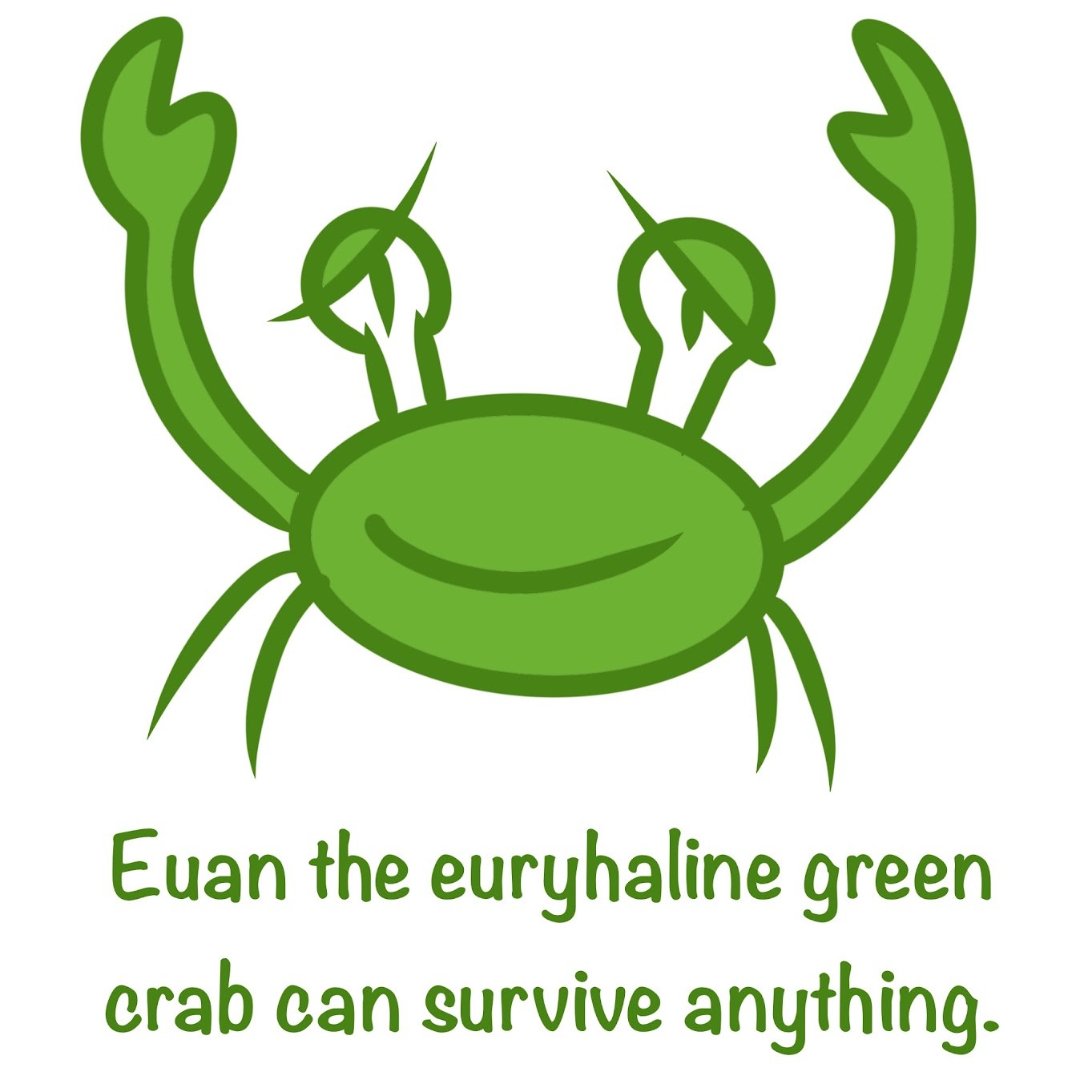
Animals that can survive large fluctuations in external osmolarity (common in estuaries and tidal pools)
Why is life hard for freshwater fish?
They constantly lose salts and gain water by diffusion from their hyposmotic environment
How do freshwater fish maintain osmotic balance?
By excreting large amounts of dilute urine and replacing salts by active uptake across the gills and diet
Why is life hard for saltwater fish?
They constantly lose water by osmosis and gain salt by diffusion
How do saltwater fish maintain osmotic balance?
By drinking seawater and excreting salts across gills, excreting salts and retaining water by kidneys, and diet
Hypertonic
A solution that contains more solute than the cell which is placed in it (withered cells)
Isotonic
A solution in which the same amount of solute and solution is available inside of the cell and outside of the cell
Hypotonic
A solution that contains less solute than the cell which is placed in it (fat cells)
3 forms of nitrogenous wastes
Ammonia (NH3), Urea, Uric Acid
Ammonia
-Most Toxic
-Freely diffuses across the whole body surface or through gills
-Need access to lots of water
-Fish/Aquatic animals
Urea
-Less toxic, requires energy
-NH3 converted to urea in liver, then excreted by kidneys
-Requires less water
-Amphibians, sharks, mammals
Uric Acid
-Least toxic, most expensive
-Does not dissolve readily in water
-Can be secreted as a paste with little water loss
-Insects, birds, reptiles
4 stages of excretion by the kidney
Filtration, Reabsorption, Secretion, Excretion
(Farting Rats Scream Excitedly.)
Stage 1 of excretion
Filtration: blood pressure forces water and small solutes through capillary bed into excretory tubule; cells and large molecules remain in the blood
Stage 2 of excretion
Reabsorption: Valuable solutes actively reclaimed back into the blood (glucose, amino acids, etc.); wastes and non-essential solutes remain
Stage 3 of excretion
Secretion: Nonessential solutes and wastes are added to the filtrate (toxins, excess ions)
Stage 4 of excretion
Excretion: Processed filtrate containing nitrogenous wastes is released
Kidney structure
Located on either side of the vertebreal column; connected to a ureter; consists of a renal vein/artery, medulla, cortex, and renal pelvis
Nephron position within the kidney
In the renal pyramid among the cortex and medulla
What is the nephron organized for?
Stepwise processing of blood filtrate
What does the blood filtrate produced in Bowman's capsule contain?
Salts, glucose, amino acids, vitamins, nitrogenous wastes, and other small molecules
What are the two primary solutes affecting osmolarity?
NaCl and Urea
Proximal tubule
Salts and nutrients are actively reabsorbed; water follows passively by osmosis; as the filtrate passes through the proximal tubule, materials to be excreted become concentrated as water is being reabsorbed in the capillaries
Descending limb of loop of Henle
Freely permeable to water through channels formed by aquaporin proteins, but very low permeability for NaCl and other small solutes. Water moves out freely by osmosis; filtrate becomes increasingly concentrated
Thin segment of ascending limb
Ascending loop of Henle is impermeable to H2O, but permeable to NaCl so NaCal initially passes into interstitial fluid freely by diffusion
Thick segment of ascending limb
Gradient becomes unfavorable for passive diffusion of NaCl --> active transport required; movement of NaCl along ascending limb helps maintain osmolarity of medulla; filtrate becomes increasingly dilute as NaCl is reabsorbed
Distal Tububle
Reabsorption of NaCl and H2O
How do the proximal and distal tubules regulate pH?
Secretion of h+ and reabsorption of HCO3- ions
Collecting Duct (When conserving water)
Aquaporin channels allowed water to be reabsorbed; impermeable to salts; solutes become increasingly concentrated; in the inner medulla, high concentration of urea drives passive reabsorption that helps to maintain high osmolarity of interstitial fluid in this region
Collecting Duct (When eliminating water)
Aquaporin channels are absent; impermeable to water; salts actively reabsorbed; hormones control absorption of water in collecting ducts by regulating aquaporin channels
Anti-diuretic hormone (ADH) Function
Prevents water loss by regulating water retention by making the collecting duct epithelium more permeable to water
When osmolarity rises above its set point, ADH release
increases
When osmolarity drops below its set point, ADH release
decreases
Function of Aquaporins
Helps reabsorb water and some solutes across the plasma membrane
Herbivore
Primarily eats plants and algae
Carnivore
Primarily eats other animals
Omnivore
Regularly consume animals as well as plants or algae
Intra-cellular digestion
Food particles are engulfed by phagocytosis; food vacuoles fuse with lysosomes containing hydrolytic enzymes
Extra-cellular digestion
Breakdown of food particles outside of cells; occurs in compartments that are continuous with the outside of the animal's body
Gastrovascular Cavity
-Animals with simple body plans
-Have a digestive sac
-functions in both digestion and distribution
Alimentary Canal
-Animals with more complex body plans
-Complete digestive tube/tract: runs between two openings
-Can have specialized regions that carry out digestion and absorption in a stepwise fashion
Mammalian digestion system
Comprised of organs specialized for sequential stages of food processing (accessory glands, oral cavity, esophagus, stomach, intestines, etc.)
Accessory Glands
Secretes digestive juices through ducts into the alimentary canal
Examples of accessory glands
Salivary glands (oral cavity), pancreas, liver, gallbladder
What is activity of the digestive tract controlled by?
Peristalsis and Sphincters
Peristalsis
Rhythmic contractions of muscles in the wall of the canal push food along
Sphincters
Valves that regulate the movement of material between compartments
Where does the first stage of digestion take place?
Oral cavity
Salivary glands
Deliver saliva to the oral cavity
What does saliva contain?
Amylase and Mucus
Amylase
Enzyme that initiates chemical digestion via the breakdown of glucose polymers
Mucus
A viscous mixture of water, salts, cells, and glycoproteins (mucins) that functions to lubricate food and protect the oral cavity.
The tongue helps shape food into a _____ and provides help with swallowing.
bolus
Pharynx (throat)
Junction that opens to both the esophagus and the trachea
Trachea (windpipe)
Leads to the lungs
Esophagus
Conducts food from the pharynx down to the stomach by peristalsis
Which portion of the esophagus has striated muscle?
Upper third (voluntary)
Which portion of the esophagus has smooth muscle?
Lower two thirds (involuntary, peristalsis)
Esophageal peristalsis
Moves the bolus down, and another sphincter is relaxed as it approaches the stomach
Stomach
-Stores food and processes into a liquid suspension
-Secretes gastric juice that performs chemical digestion
-Creates chyme
Chyme
Mixture of ingested food and gastric juice
Active agents of gastric juice are secreted by 2 types of cells:
Parietal cells and chief cells
Parietal Cells
Secretes hydrogen and chloride ions separately into the lumen (cavity) of the stomach
Hydrochloric acid (HCl) lowers pH to ~2, which
kills bacteria and denatures proteins
Chief Cells
Secrete inactive pepsinogen, which is activated to pepsin when mixed with HCl
Pepsin
A protease, or protein-digesting enzyme, that cleaves proteins into smaller peptides
How is the stomach lining protected?
-Maintaining the components of gastric juice separate or inactive prior to secretion
-Mucus production
-Rapid regeneration of the epithelial layer (every 3 days)
Small intestine
-Longest section of the alimentary canal
-Major organ of digestion and absorption
-Where most enzymatic hydrolysis of macromolecules occurs
Initial segment of the small intestine
Duodenum
What occurs in the duodenum?
Chyme mixes with digestive juices from epithelial lining, pancreas, liver, and gallbladder
Pancreatic secretions include
Bicarbonate and enzymes
Bicarbonate role
Neutralizes and buffers low pH from stomach
Which enzymes break down nutrients?
Amylase, Lipase, Proteases, Nucleases
Amylase
Breaks down sugars
Lipase
Breaks down fats
Protease
Breaks down proteins (trypsin, chymotrypsin)
Nuclease
Breaks down nucleotides
Role of the liver and gallbladder for digestion
Provides bile for emulsifying lipids
Why does the small intestine have a huge surface area?
Due to villi and microvilli that are exposed to the intestinal lumen; creates a brush border that increases the rate of nutrient absorption
The structure of the small intestine is designed to
maximize surface area for absorption through folds, villi, and microvilli
Hepatic portal vein
Carries nutrient-rich blood from the capillaries of the villi to the liver, then the heart
Liver functions (digestion)
-Regulates nutrient distribution via interconversion of organic molecules
-Detoxifies foreign substances
Bile is made in the _____ and stored in the _____
Liver, gallbladder
Bile
aids in digestion and absorption of fats within the small intestine; destroys nonfunctional red blood cells
Epithelial cells absorb fatty acids and monoglycerides and recombine them into
triglycerides
Triglycerides are coated with phospholipids, cholesterol, and proteins to form water-soluble
chylomicrons
Chylomicrons are transported into a _____, a lymphatic vessel in each villus.
Lacteal
Lymphatic vessels deliver chylomicron-containing lymph to
Large veins that return blood to the heart
Absorption in the large intestine includes
cecum, colon, rectum
Cecum
aids in the fermentation of plant material and connects where the small and large intestines meet
Colon
Completes the recovery of water; houses rich community of bacteria; processes remaining waste (feces, including undigested material and bacteria)
Feces are stored in the _____ until they can be eliminated through the anus.
rectum
What controls bowel movements?
Two sphincters between the rectum and anus
Countercurrent exchange in the fish gills helps to maximize
diffusion
A decrease of blood pH from 7.4 to 7.2 causes hemoglobin to
???
Most of the Co2 produced by humans
is converted to bicarbonate ions.
The Bohr Shift results
from CO2 or H+ binding to hemoglobin
A single hemoglobin molecule can bind up to _____ O2 Molecules.
four
The maximum volume of air that can be inhaled and exhaled is called
Vital capacity
Mammals breathe using _____.
Negative pressure
A faster rate of respiratory gas exchange would be promoted by
increase in partial pressure difference
The contraction of skeletal muscles is based upon
myosin cross-bridges binding to actin
Glycolytic muscle fibers typically have
less resistance to fatigue
The motor unit in vertebrae skeletal muscle refers to
a motor neuron and all muscle fibers something ???
What occurs last during muscle contraction?
Conformational change in troponin
The actin filaments within a sarcomere connect at the
Z line
To maintain osmotic homeostasis, freshwater fish must
excrete large quantities of water.
The body fluids of an osmoconformer would be _____ with its _____ environment.
isosmotic; seawater
A cell placed in a hypertonic solution would very likely
shrivel
Urea is the primary nitrogenous waste product of
humans
_____ is the most expensive nitrogenous waste product to make, but least toxic.
Uric acid
Nitrogenous wastes are produced mostly form the catabolism of
proteins and nucleic acid
The osmoregulatory process called “secretion” refers to
the selective elimination of ions something else ????
_____ in the nephron is least selective.
Filtration
Processing of filtrate in the proximal and distal tubules
regulates pH
NaCl is passively reabsorbed in the
thin segment of the ascending whatever ?????
Increased ADH secretion likely occurs after
sweating-induced dehydration
If an animal did not eat an essential amino acid, you would expect it to
not effectively make many necessary proteins
The function of chylomicrons is to
transport lipids from the intestine to other organs
The large surface area in the gut directly facilitates
Absorption
The small intestine is involved in breaking down
polysaccharides
Antacids work by blocking the action of _____ cells in the stomach.
parietal
The digestion of _____ begins in the stomach.
protein
The bile salts
emulsify fats in the duodenum
Pepsinogen is converted to its active form in the stomach by
Hydrochloric Acid (HCl)
A relatively long cecum is a characteristic of
Herbivores
_____ is NOT a feature of gills that promotes efficient respiratory gas exchange.
Water and blood flow in the same direction
The % of O2 delivered to the tissues that is dissolved in blood plasma is
<3%
Release of CO2 in the systemic tissue _____ the proton (H+) concentration in the blood, thereby _____ blood pH.
increases; decreasing
Contraction of myofibrils in skeletal muscle is initiated by the
release of calcium from the sarcoplasmic reticulum
Osmosis describes the movement of ____ across a semi-permeable membrane.
solvents (ex. water)
Regarding stenohaline osmoregulator in freshwater,
it regulates internal osmolarity, but can only tolerate a narrow range of external osmolarity.
Carbohydrate digestion begins in the
mouth
Hydrochloric acid (HCL) in the stomach is produced by
gastric parietal cells